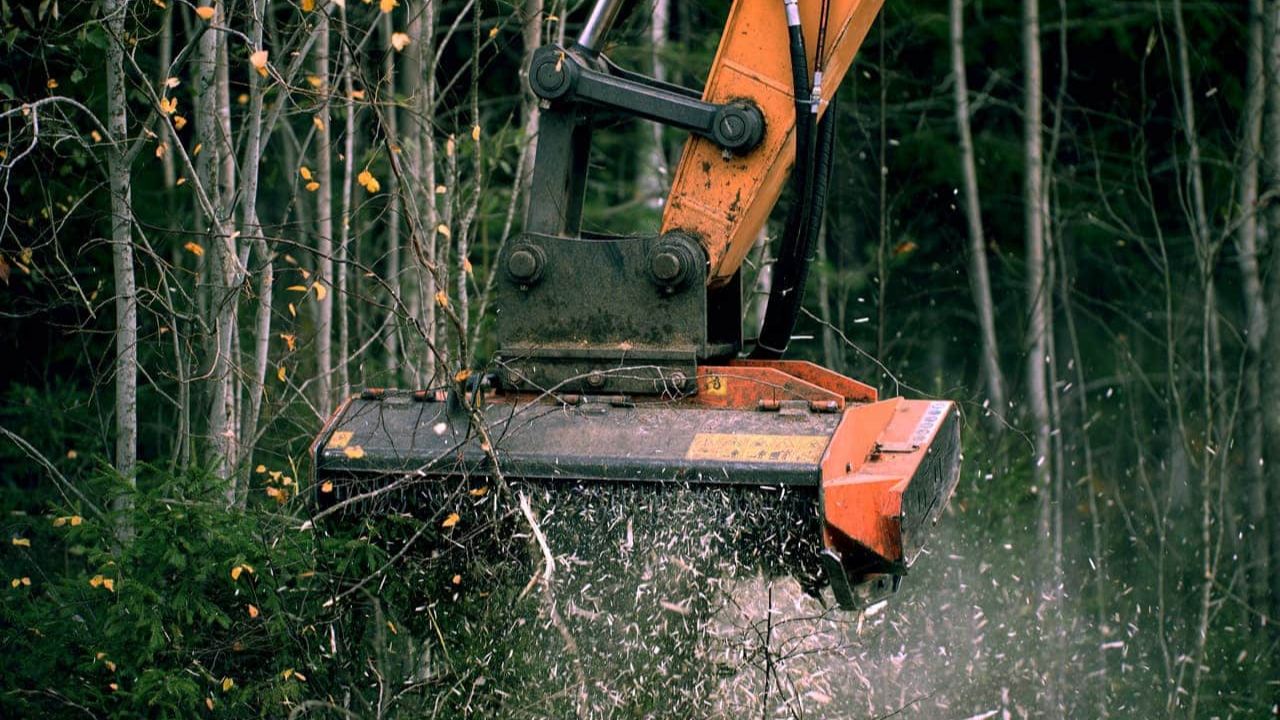Mulching is important in forestry, agricultural activities, and the clearing of land. These minor yet efficient parts dictate the efficiency, precision, and productivity of a mulching machine. Nevertheless, such wear parts as mulching teeth wear out under the influence of extreme working conditions, as does any other wear part. It is necessary to understand the symptoms that indicate when teeth require replacement to ensure that equipment maintains its performance and does not lose time and money, which is one of the most expensive costs.
Decline in Cutting Efficiency
Among the initial indications that mulching teeth require replacement is a significant drop in cutting performance. The machine cuts through the trees, shrubs, and underbrush with ease when the teeth are sharp and in the right position and flow in a smooth and consistent manner. When the teeth start becoming dull, operators can also realize that the machine fails to chew vegetation at the same speed as it used to chew it previously. The mulcher can also begin to leave raw material or make several passes over the same region to get the required outcome.
Not only does this decrease the efficiency of operation, but it also increases the load of the motor, drum, and hydraulic system of the mulcher. Long service of dulling or worn-out teeth can result in more fuel consumption, vibration, and even breakage of the cutting head, and therefore, it is important to replace them in a timely manner.
Visible Wear and Damage
One of the surest methods of identifying the time to replace the teeth used in mulching is by visual examination. In the long run, teeth can become chipped, rounded, cracked, or lose carbide points. Tungsten carbide teeth are high-durability teeth, yet even these do wear out after being exposed to rocks, soil, and heavy vegetation over a long time.
Flattened cutting edges, corrosion, and absence of carbide inserts should be sought by the operators. Once the cutting edge becomes dull or the carbide has broken off the steel base, the teeth will not be able to work effectively. In severe cases, broken teeth will lead to imprecise cuts, burn plants rather than chopping them in clean cuts, or even fall together during the process, which will result in a safety risk. Wear can be spotted early, and larger problems with maintenance could be avoided by inspecting each time it is used and before it is.
Reduced Mulching Quality
Another important measure of tooth condition is the quality of the mulch produced. The mulcher teeth are healthy, sharp, and result in fine and uniform mulch that decomposes fast and enhances the health of the soil. The output might sound rough and uneasy once the teeth become worn and damaged. When a piece of larger wood or uncut stems is found, it is an indication that the teeth are no longer cutting clean.
Poor quality of mulching not only ruins the appearance of the final job but also decreases the general performance of land-clearing jobs. In the case of contractors and forestry specialists, bad-quality mulch can cause dissatisfaction to customers, and it can bring with it poor performance in the next projects. Keeping the teeth sharp and well-balanced guarantees the results and a professional-level performance.
Overheating and Machine Life Loss
Excessive overheating during use is another indicator of damaged mulcher teeth, but it is subtle and not very severe. Once teeth lose their sharpness, it requires greater power to get the same results, which causes excessive heat and makes the machine run. This additional load may reduce the life of the hydraulic, belts, and bearings. The operators will find the machine was hotter than normal or has a burning smell after prolonged use.
With time, this pressure contributes to early wear and tear of equipment and the high cost of maintenance. As soon as teeth are showing signs of wear, replacement will support the overall functioning of the mulching system in the best way possible, decrease the amount of heat built up, and also prolong the life of the whole system.
Conclusion
It is important to recognize when the mulching teeth require replacement to ensure that the operations of the forestry and the land-clearing works are efficient in terms of performance, safety, and cost-effectiveness. There are also signs that the teeth are not so fresh anymore, and this is evidenced by reduced cutting power, excessive vibration, wear that can be seen, poor quality of mulch, and overheating are some of the signs. Replacement of the high-grade carbide teeth on a timely basis restores the ability to cut efficiently, safeguards the equipment parts, and results in smooth and reliable working of the equipment in harsh conditions. To forestry practitioners and contractors, it is a good business choice to maintain the mulcher teeth proactively, both in productivity and equipment life.

